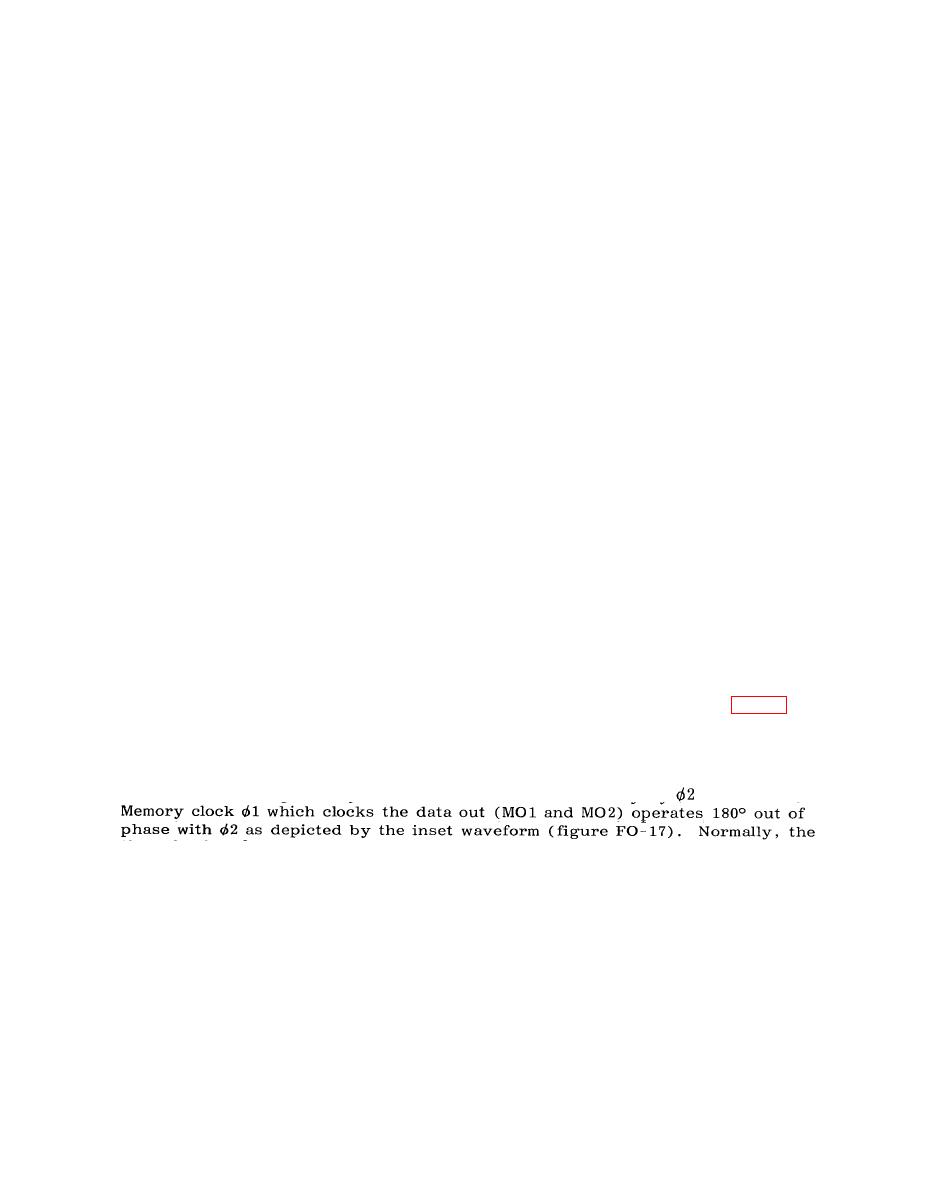 |
|||
|
|
|||
|
|
|||
| ||||||||||
|
|  TM 11-5820-917-13
period, one memory is read in and presented for half of the clock period, and
then the other memory is read for the other half of the clock period, producing
an effective 2.4 MHz bit rate at U 47-12 to be presented to the memory video
circuit.
4-50. Frequency marks are generated for every 20 vertical TV lines which is
equivalent to each MHz in the 2-16 MHz format or each 2 MHz in the 2-30 MHz
format. A counter formed by U 5 and U 11 (figure FO- 16/4) divides by 20 the
vertical sync pulses ( VS 1) , which occur for every vertical line, enabling a fre-
quency mark flip-flop U20 to be set every 20 lines. The frequency mark infor-
mation is available for the full vertical scan at U 20-6. This in turn is gated
into the video of the CRT at U17- 11. At the start of each CRT raster line, a 2-
microsecond gate signal provided at U 9-7 enables the lower frequency mark to
appear on the screen. A second one- shot output on U 9-10 enables the frequency
marks to appear at the top of the screen after 63 microseconds of vertical scan
time. The frequency mark data causes U15- 8 to go high, resulting in a white
output on the screen. The screen could also be white as a result of noise or
AGC data thus obliterating the frequency marks. However, U 15 and U 16 comprise
an exclusive-or circuit to ensure that the frequency marks appear as white-on-
black or black-on-white depending on the other signal inputs to the CRT video
combiner (U15 and U16) . Characters appear at the bottom of the CRT display
as a result of any input to U17- 10 on line PNG from assembly 1A2A2. All cur-
sors, moving, fixed, or load, are combined at, and then gated to, the CRT by
U 17-3. The video information from the CRT memory comes from line MVO which
contains the combined circulating CRT memory data. This data is gated onto
the screen from U 17-6.
4-51. CRT DISPLAY MEMORY ( 1A3A1) . This circuit contains three, 36k-bit
memories consisting of 36, 1024-bit MOS shift registers each and associated
clock drivers. The complete circuit is repeated three times, one for each path.
NOTE
The circuit for only one path is shown in the schematic diagram, figure
FO-17.
The memory for each path is divided into two banks of 18 x 1024 bits. Both
banks are loaded at the same time. The data enters at odd and even inputs
MI 1 and MI 2, respectively, and is clocked into the memory by
at 1.2 MHz.
three banks of memory, each containing one complete CRT path display, con-
tinually circulate via the gating logic from the memory load logic circuit (1A 3A2) .
When new data comes in, it is gated in place of that path's circulating memory.
Therefore, as long as primary power to the receiver remains on, the most
recently received path data is always available for display. (The standby battery
supply does not refresh the memory in the event of primary line failure. ) The
2-phase memory clock is buffered by transistor clock drivers to provide an
approximate +10 to -6 volt clock swing required by the MOS shift register
memory.
|
|
Privacy Statement - Press Release - Copyright Information. - Contact Us |